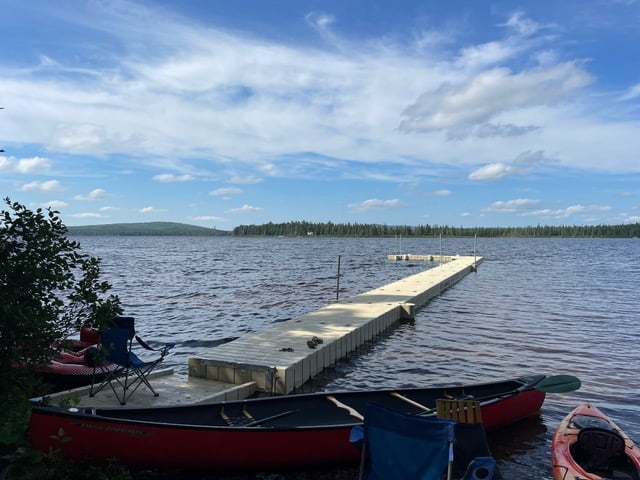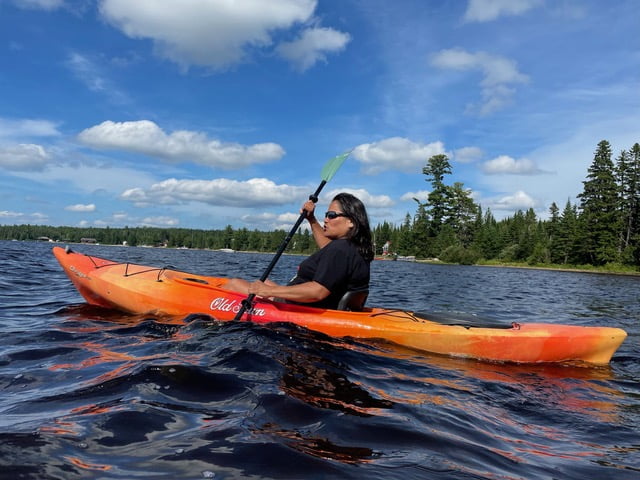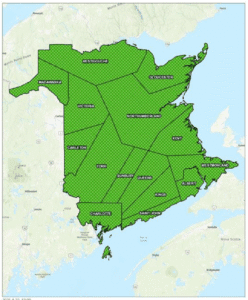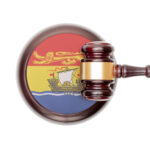Judge releases private land owners from lawsuit launched by Wolastoqey Nation
By John Chilibeck, Local Journalism Initiative Reporter
In what’s being described as a landmark decision, a judge has ordered that several big industrial defendants and everyday private property owners must be removed from a lawsuit launched by the Wolastoqey Nation.
But there’s a big catch. If the Aboriginal title claim is proven in court, Indigenous leaders could still demand reparations for the taking and transfer of their land by the Crown – or today’s provincial and federal governments – more than 200 years ago.
“We are thrilled by this decision and so happy the court put an end to the attacks on our claim,” said Chief Allan Polchies of Sitansisk, or St. Mary’s First Nation, in a release on Friday. “We applaud the Honourable Justice Gregory for her courageous and well-written decision.
“The court has been clear that the Crown needs to sit down with us to negotiate our title claim. We trust and hope that the new provincial government will stand by its campaign promises and immediately begin discussions with us.”
The previous Progressive Conservative government, led by former premier Blaine Higgs, mounted a spirited campaign against the Aboriginal title claim, arguing it put the private property interests of big companies and everyday people at risk.
The title claim involves some 283,000 parcels of land on what the Wolastoqey Nation considers its traditional territory, most of it held by private property owners on the western side of the province.
Seven big industrial defendants, most of them timber companies, were named in the lawsuit. At the same time, other private property owners, such as homeowners, were described as “strangers to the claim” by the Wolastoqey Nation.
The nation is comprised of six communities and about 12,000 people living along the Wolastoq or St. John River.
On the campaign trail, the Liberals pledged to negotiate rather than litigate the claim for title on more than half of New Brunswick’s territory, but so far, the new cabinet that was installed two weeks ago has been silent on the issue.
The new minister of Indigenous Affairs, Keith Chiasson, is meeting privately with the six Wolastoqey chiefs next week to hear what they have to say.
Justice Kathryn Gregory of the Court of King’s Bench heard preliminary motions earlier this year over eight days in Fredericton. Those motions, brought forth by the province’s Attorney General’s Office and three timber companies with large, sprawling properties – J.D. Irving, Acadian Timber and H.J. Crabbe and Sons – sought to have private landowners removed from the lawsuit.
In the 40-page decision issued Tuesday, some five months after lawyers had contested the issues, the judge said it was important to ensure the lawsuit got off on the right footing; otherwise, years of litigation and expense could be wasted, pointing to other Aboriginal title claims that got hopelessly bogged down.
As many as 20 lawyers from all sides attended several days of hearings in the spring, and four years have already passed since the Wolastoqey Nation first launched its claim. Most of the participants said it would take years, if not decades, for the lawsuit to be resolved in the courts, given what’s at stake and the difficulty of amassing evidence, much of it going back three centuries.
Gregory said the legal issue at stake, a declaration of Aboriginal title, is between the Wolastoqey Nation and the Crown, which has obligations to Indigenous people according to the constitution.
The industrial defendants, she said, are not part of the lawsuit because the government granted them the land and are a third party to the larger dispute.
“Their presence in this litigation is a distraction and a detraction from the constitutional nature of the action,” she wrote, adding that the timber firms would have nothing to say about the legal arguments about whether the land should have been granted to them, ultimately a decision made centuries ago by the Crown.
“The industrial defendants are effectively along for the ride,” she wrote.
However, Gregory also warned that the Wolastoqey Nation could seek financial or other forms of compensation from the province and Ottawa, such as a land transfer, should it prove in court that it has Aboriginal title to the parcels in question.
“This should not be taken to suggest that should Aboriginal title be declared, the declaratory relief ordered by the court could not consider repossession of private land but such relief could only come through the Crown, not directly from the industrial defendants,” she wrote.
Gregory said if the court does establish a declaration of Aboriginal title, it will fall on the government to negotiate and reconcile with the Wolastoqey Nation over the granting of deeds to private landowners over the last 250 years.
The defendants have so far been silent on the latest ruling. A spokesperson for J.D. Irving, Ltd., Anne McInerney, said the company would not comment on Gregory’s decision, as did Hugh Cameron, a lawyer representing Acadian Timber in the proceedings.
A lawyer for H.J. Crabbe and Sons and the Attorney General’s Office didn’t respond for comment.
In a lengthy release Friday, Indigenous leaders said they had achieved an enormous victory.
They pointed out that Gregory had confirmed that a declaration of Aboriginal title could be issued over privately owned lands and that the Wolastoqey Nation did not need to amend their title claim map.
“This is a precedent setting decision and marks a major advancement in Aboriginal law with implications across the country.”
The chiefs acknowledged that the court had removed the industrial defendants from the court action but said it would allow the claim to proceed in stages, something they had already banked on.
“If Aboriginal title is proven, then the question turns to what remedies are owed, including whether lands owned by the industrial defendants should be returned to the Wolastoqey Nation,” the leaders said in their release.
However, the judge also ordered the Wolastoqey Nation to remove references to “strangers to the claim,” or everyday property owners from the lawsuit, other than to keep their properties on a map that shows the title claim area.
Given that the Wolastoqey Nation said they weren’t interested in taking back the land of those people, the judge said there was no point in having them in the lawsuit.
Gregory was evidently not pleased that the previous government and Indigenous leaders had traded shots in the media over what was at stake for these property owners.
“I find that both parties have made use of the references in the pleadings to the strangers as a basis to make politically charged commentary outside the courtroom that is not conducive to the litigation process or the reconciliation process,” the judge scolded.
Gregory did not award legal costs to the defendants for upholding some of the arguments in their motions, at least not yet.
She said she wanted to hear the lawyers spell out the costs they had racked up and what the provincial government and the timber companies thought the Wolastoqey Nation should pay them for wasting their time.
But she cautioned them to think carefully about their financial demands, pointing out that Aboriginal law is still evolving in the country, and the issue of how private property rights interact with Aboriginal title remains thorny.
She then quoted from the landmark Supreme Court decision from 2014, when it declared Aboriginal title for the first time in the country to the Tsilhqot’in people in British Columbia.
“What is at stake is nothing less than justice for the Aboriginal group and its descendants, and the reconciliation between the group and the broader society.”














